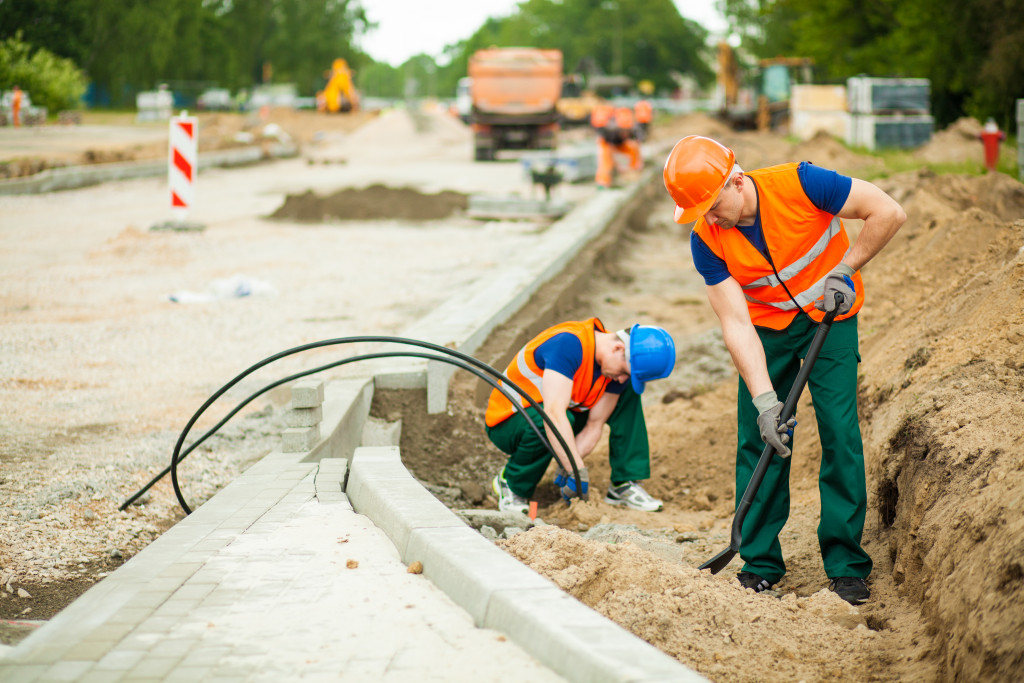Natural disasters can severely damage roads, making them unusable for transportation. For example, a 2010 study by the University of South Florida found that after Hurricane Ike, more than half of the roads in the Houston area were either closed or in poor condition. In addition, a 2017 American Society of Civil Engineers study found that natural disasters cause an average of $2.8 billion in road damage each year. This damage can include everything from cracked pavement to washed-out bridges.
Because of the importance of roads, it is essential to have a plan for quickly and efficiently repairing them following a natural disaster. This process typically includes the following steps:
Assessing the Damage
Planning will always be the first step to fixing something; this is no different when it comes to repairing roads. Engineers will need to inspect the damage to develop a plan for repairs thoroughly. This assessment will include looking at a depth of cracks, determining if there are any sinkholes, and noting the location of any washed-out sections.
The damage assessment will be critical in identifying the necessary repairs, the estimated cost, and the timeline for those repairs. You can focus on emergency repairs that need to get made immediately and long-term rehabilitation that can wait until after the immediate danger has passed. Damage assessment will also allow you to identify the equipment, tools, personnel, and materials to secure, ensuring that you can accomplish everything once you’ve started working.
Creating Alternative Routes
Broken roads mean that cars will not be able to use them. However, sometimes there are ways to create alternative routes that people can use until repairs get completed. For example, you may use a different lane on a bridge or reroute traffic around an area of damage. This strategy will help keep people moving and prevent traffic jams and gridlock.
It might not be immediate, especially when the roads impacted will take longer to fix, but having an alternate route will help keep people moving in the meantime. Clearing debris might be enough to make the road usable for traffic. In other words, if a tree has fallen on the road, you can remove it and then put up signs to warn people about the damage.
Securing Funding
Even if you have a plan ready to go, you won’t be able to do anything without funding. Often, local and state governments will have emergency funds available to help with natural disaster relief efforts. The Federal Highway Administration (FHWA) also offers emergency relief funds through its Emergency Relief Program. To receive these funds, you must apply with your repair plans and cost estimates.
There are also other ways to finance repairs, such as using private insurance or partnering with private companies. For example, some companies will help with repairs in exchange for naming rights to the repaired section of the road. Once you have secured the funding, you can start making repairs.
Making Repairs

Once the damage gets assessed, it’s time to start making repairs. This step usually begins with emergency repairs that need to get completed immediately. These could include patching potholes, repairing cracks, and clearing debris from the road. Once the immediate danger has passed, you can work on long-term repairs, such as repaving the road or rebuilding washed-out bridges.
It is essential to use high-quality materials when making repairs to roads. Roads are constantly exposed to weather and traffic, quickly degrading lower-quality materials. Using high-quality materials will help to ensure that your repairs last until you can make more permanent fixes. Cold patch repair might be a good option for making temporary repairs to potholes, even big ones.
After the repairs have been made, it is essential to put them to the test before reopening them to traffic. This step will help to ensure that the repairs can withstand regular use and weathering. For example, you might fill a pothole with cold patch repair and then wait 24 hours to see if it holds up before opening the road to traffic.
Reopening Roads
After the repairs have been made and tested, you can reopen the roads to traffic. Often, this process will happen gradually as different road sections are repaired. Once the repairs have been completed, you can remove any detour signs and alternative routes. You can also remove any road closures and reopen the roads to traffic.
It is essential to maintain roads even after they have been repaired. This step will help to ensure that the repairs last and that the streets stay in good condition. Regular maintenance tasks include patching potholes, repairing cracks, clearing debris, and repaving the roads. You should do these tasks regularly to keep the streets safe and functional.
Final Thoughts
Following a natural disaster, a lot of work goes into rebuilding roads:
- You must assess the damage to identify what needs to be done.
- You need to secure funding for the repairs. Once the repairs have been made, you need to test them before reopening the roads to traffic.
- You must maintain the streets regularly to keep them in good condition.



